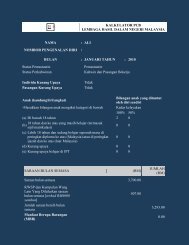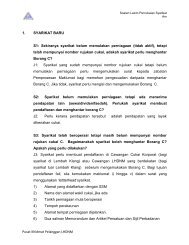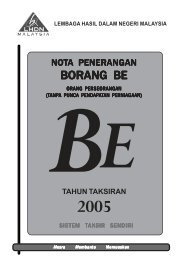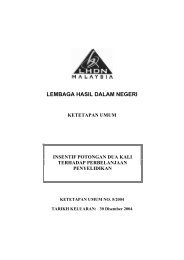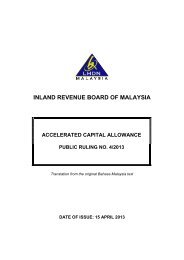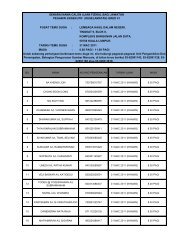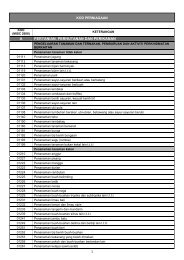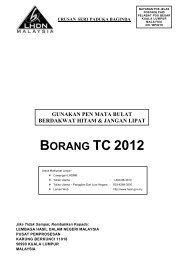Tan Sri Mohd Sidek Hassan
Tan Sri Mohd Sidek Hassan
Tan Sri Mohd Sidek Hassan
- No tags were found...
You also want an ePaper? Increase the reach of your titles
YUMPU automatically turns print PDFs into web optimized ePapers that Google loves.
At Your Serviceplace for society to live in. This in short has to be the mantra for Malaysia’s blueprintof alternative energy sourcesRenewable Energy (RE) has been recognised as clean and sustainable form ofenergy source. While many have been concerned with the high investment costfor green energy, the good news is-- market demand to an alternative sustainablesource will drive the price down. According to a research report published by theInternational Energy Agency, it is estimated that as the renewable energy marketdoubles, the price of RE will be reduced by at least 20%. As the cost of conventionalfuel is projected to rise, there will be a point in time when both the price of REand conventional fuel i.e. gas or coal are equal. When this happens, the country issaid to have attained grid-parity. Countries currently racing close to grid paritiesare Japan, Korea and some Southern European countries.Thus, using renewables in place of fossil fuel resources to generate electricity wouldbe a preferred choice as it is environmentally friendly. However, until we attaingrid parity, Malaysia would need comprehensive and holistic policy instruments inplace to generate the market for green energy or RE.In July 2009, the Honourable Prime Minister launched the Green Technology Policywhich is a catalyst for green technology development for Malaysia. In line withthe policy, our Ministry has also established Renewable Energy Policy and ActionPlan (REAP) where we are now ready for the implementation stage, pending theapproval from the Cabinet.The source of RE identified under this policyand action plan are biomass, biogas, municipalsolid waste, solar and mini-hydro. Under theREAP, we have also set the medium and longtargets of RE growth.By 2015, the estimated potential for electricity from sources such as biomass andbiogas is 330 MW and 100 MW, respectively. For the same period of time, minihydrois estimated to have a power generation capacity of 290 MW while that ofsolid waste is approximately 200 MW. Solar Photovoltaic (PV) is estimated tohave a cumulative capacity of 55 MW in 2015. Beyond 2020, it is predicted that158



